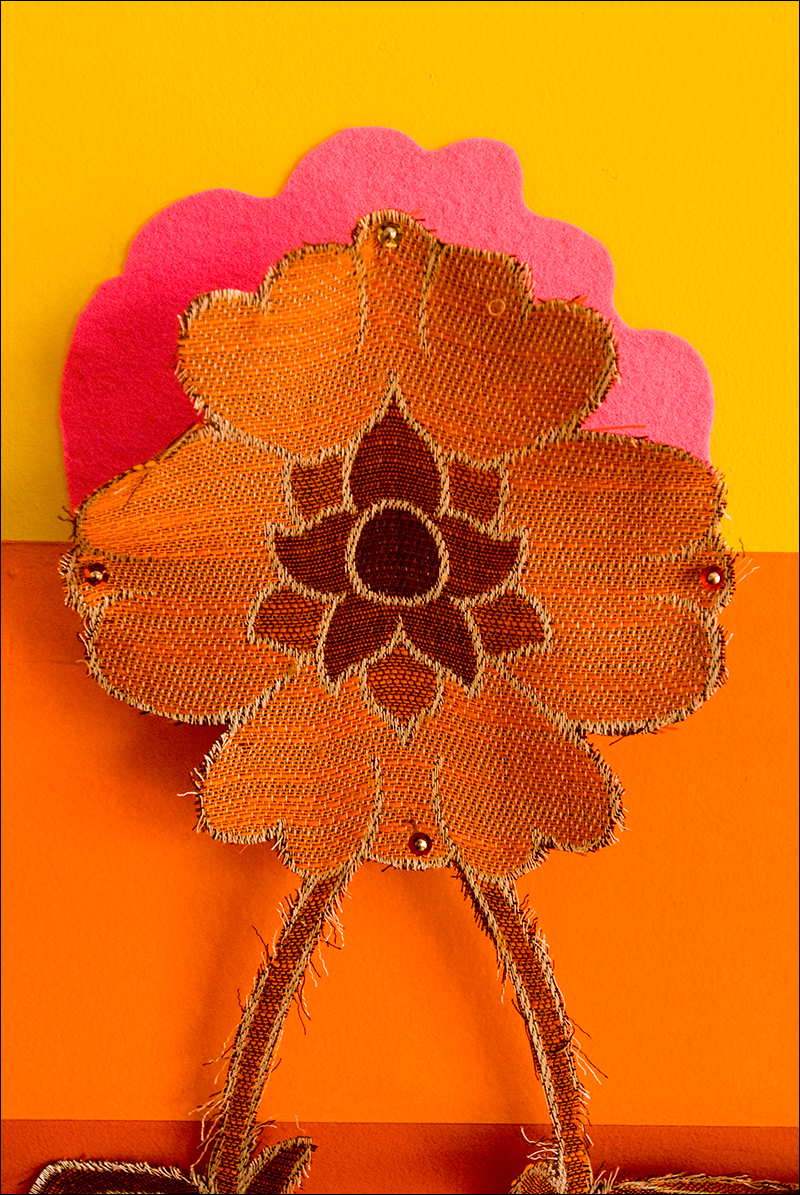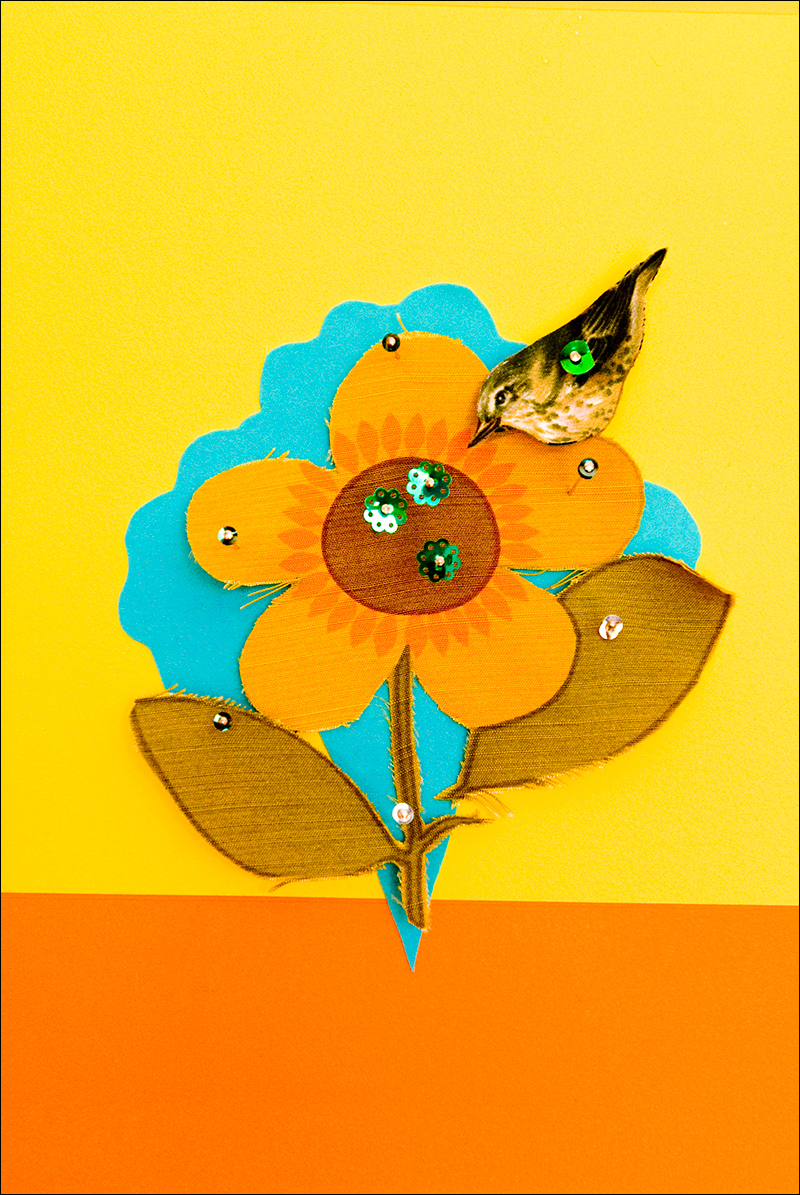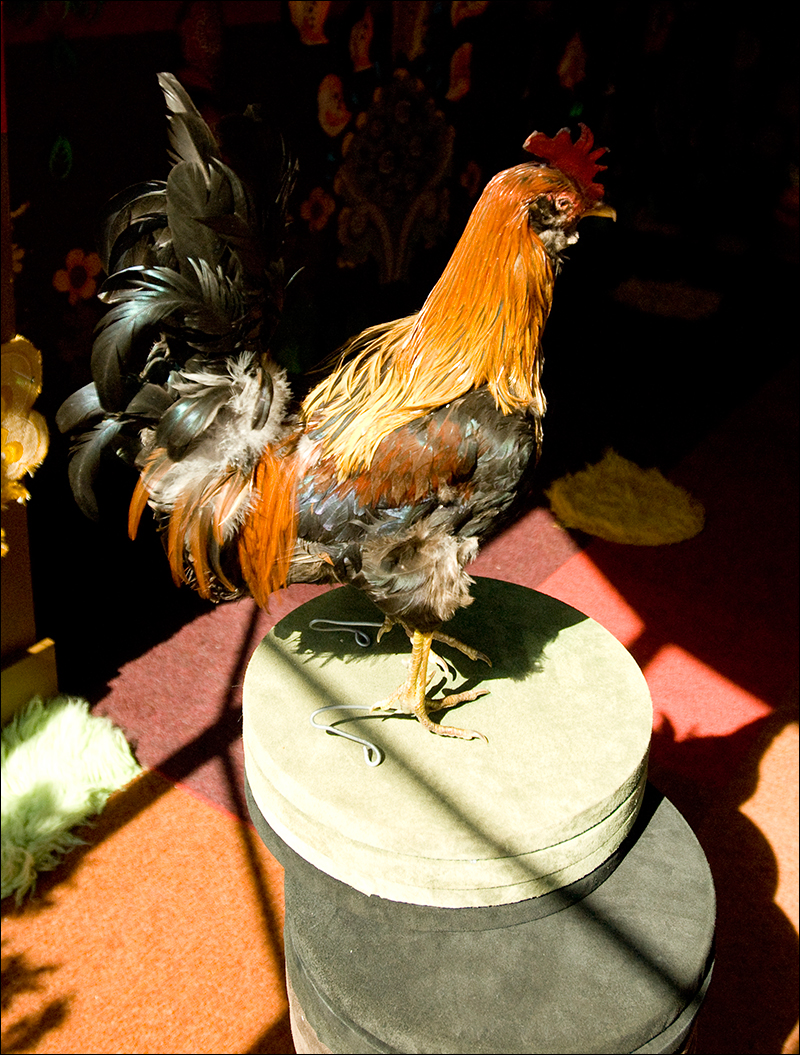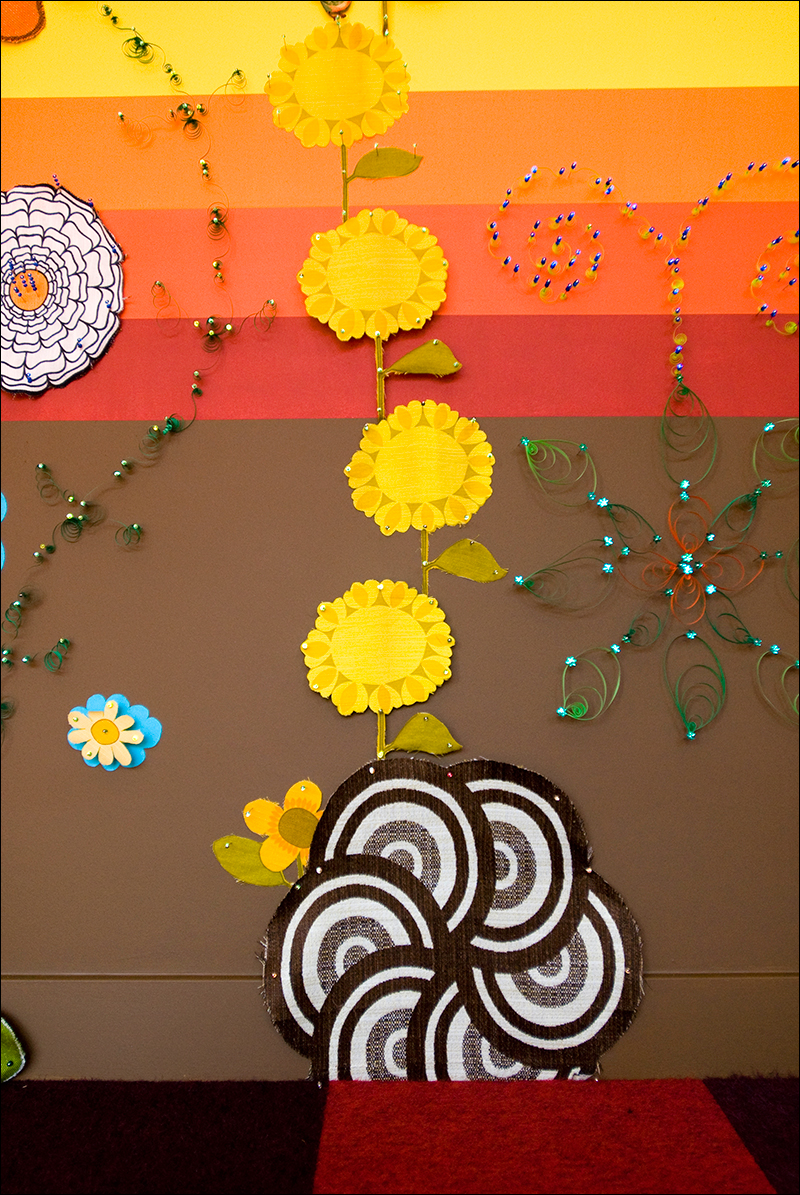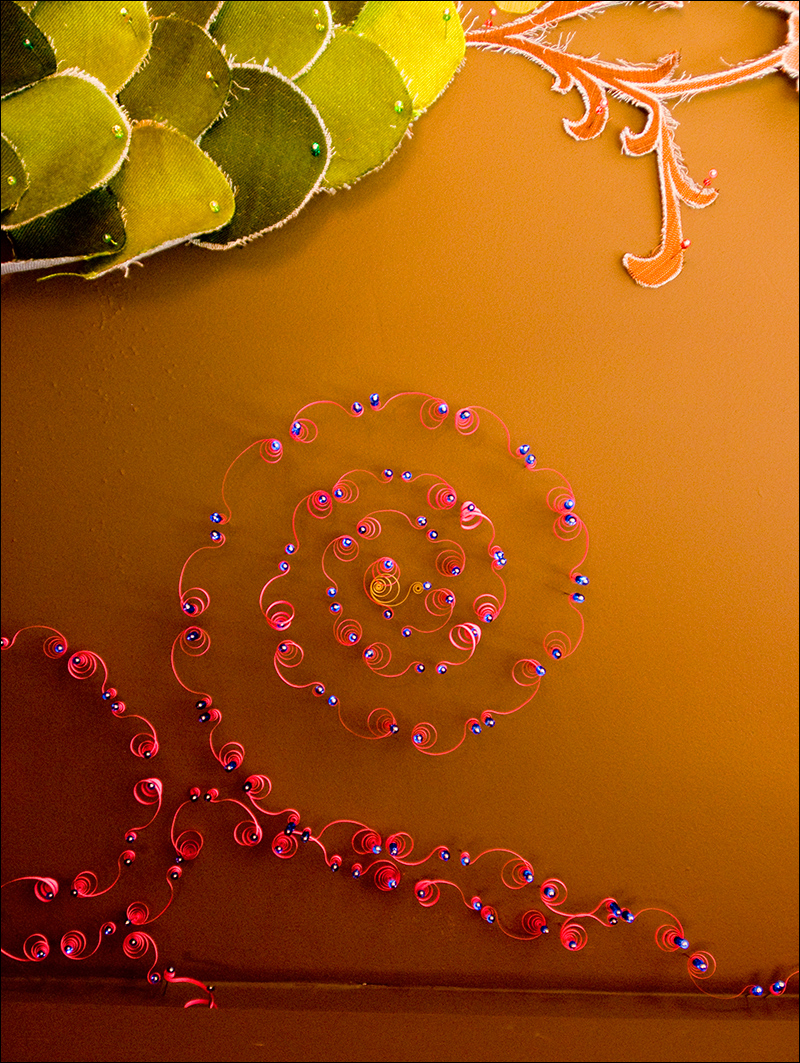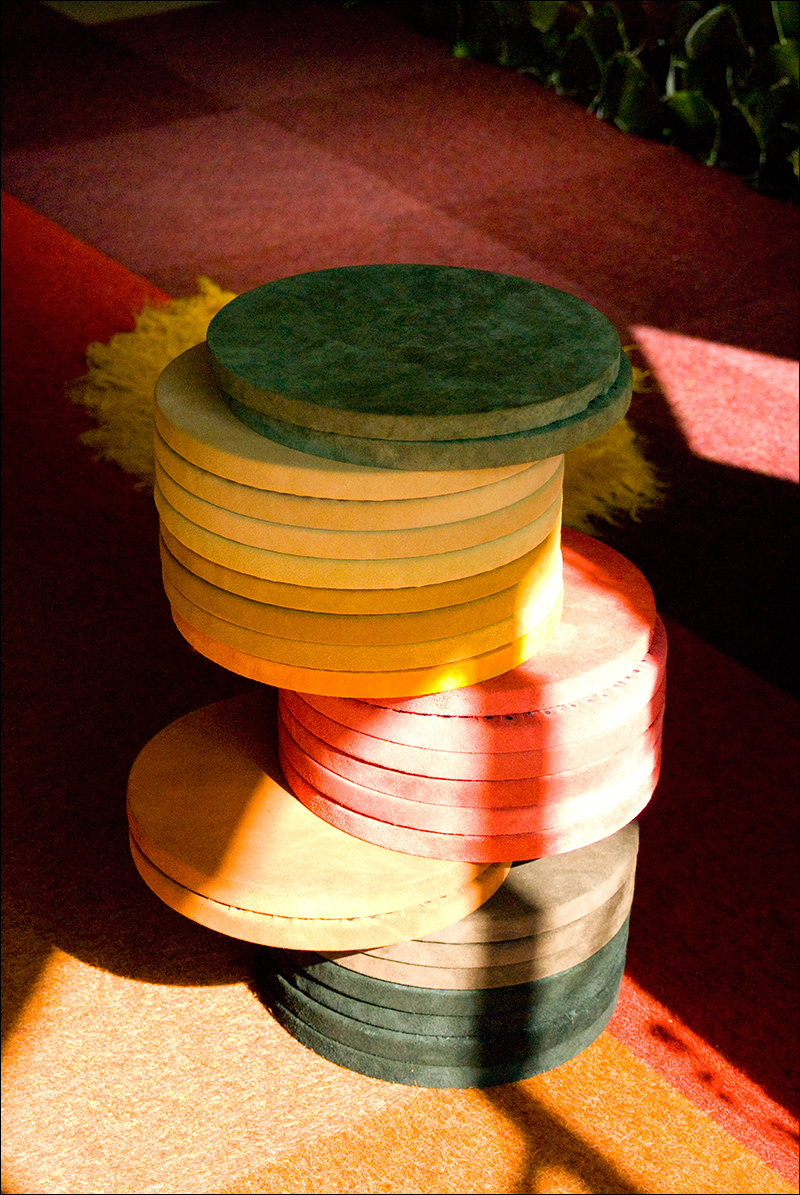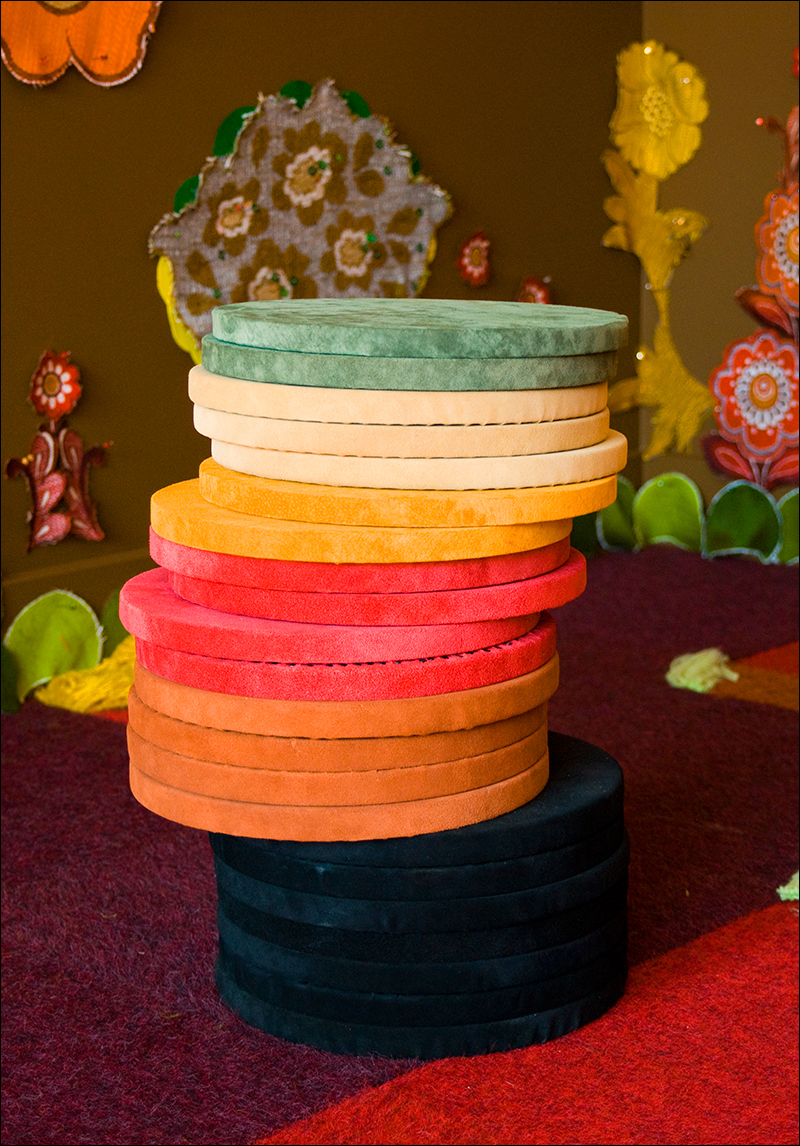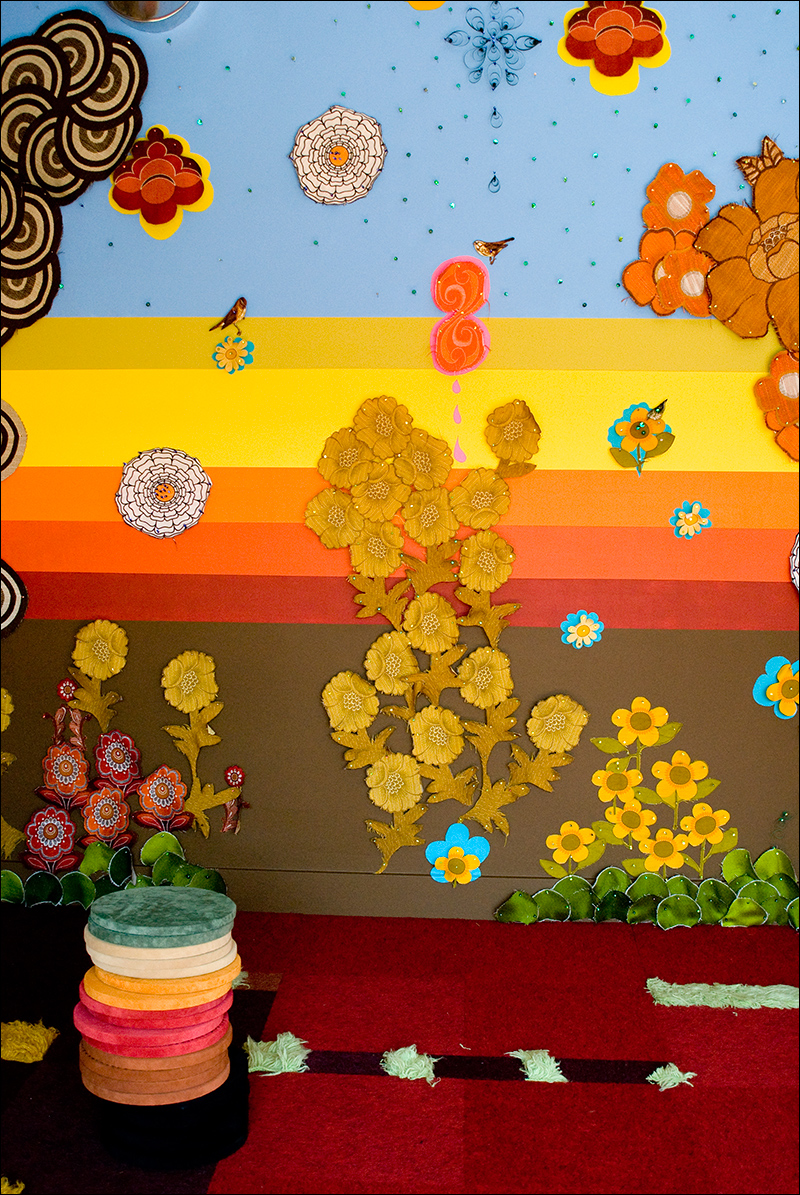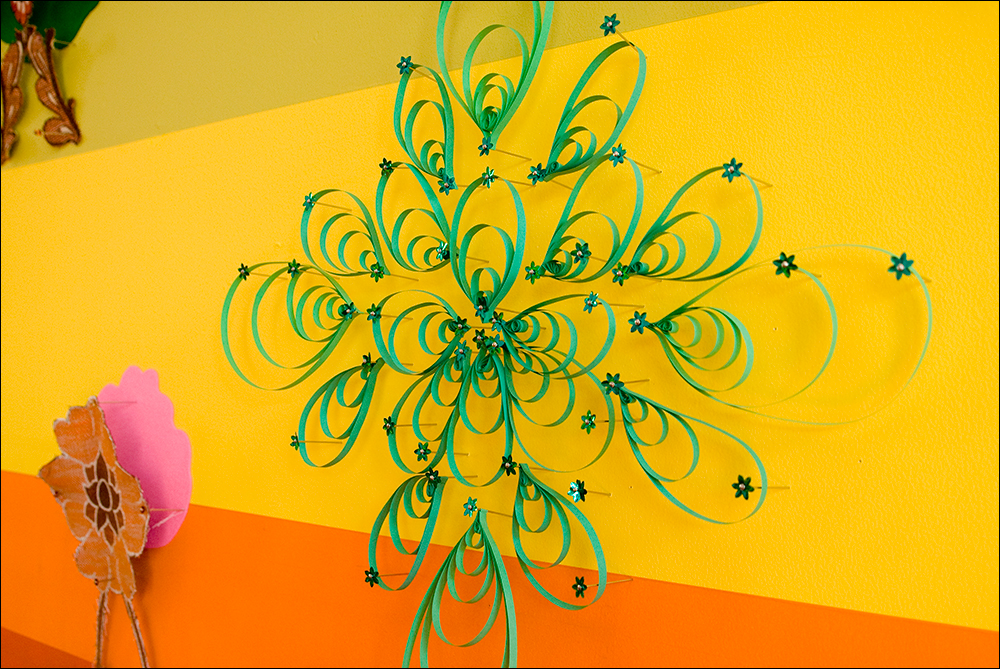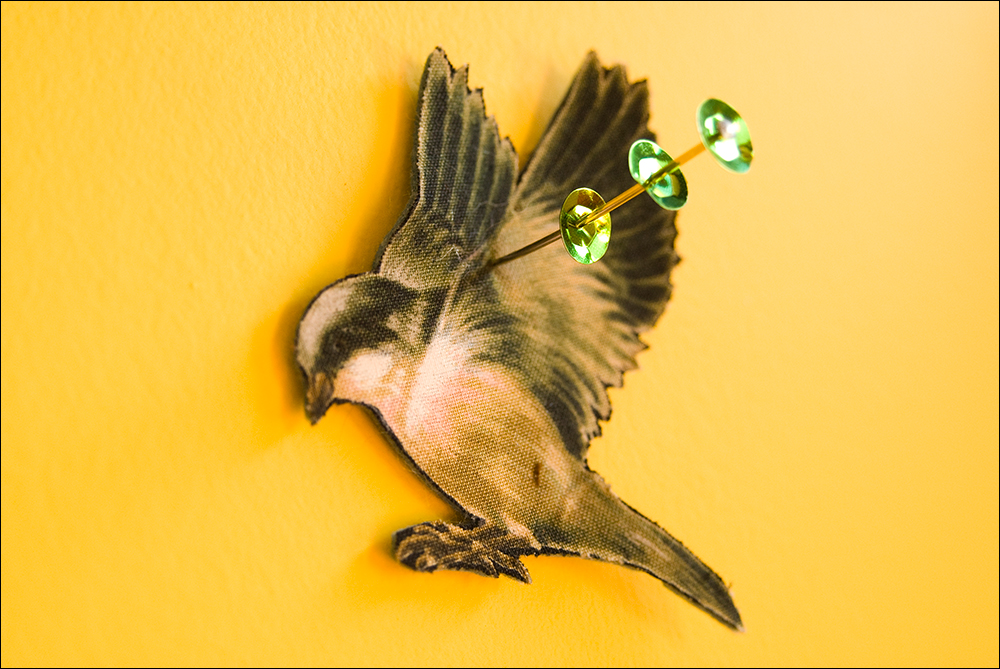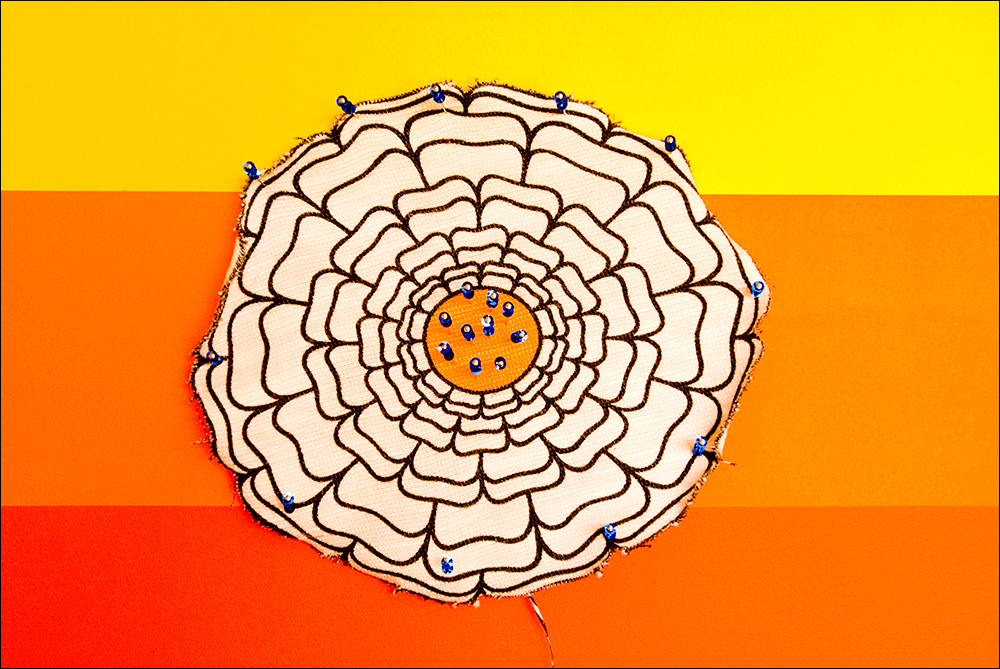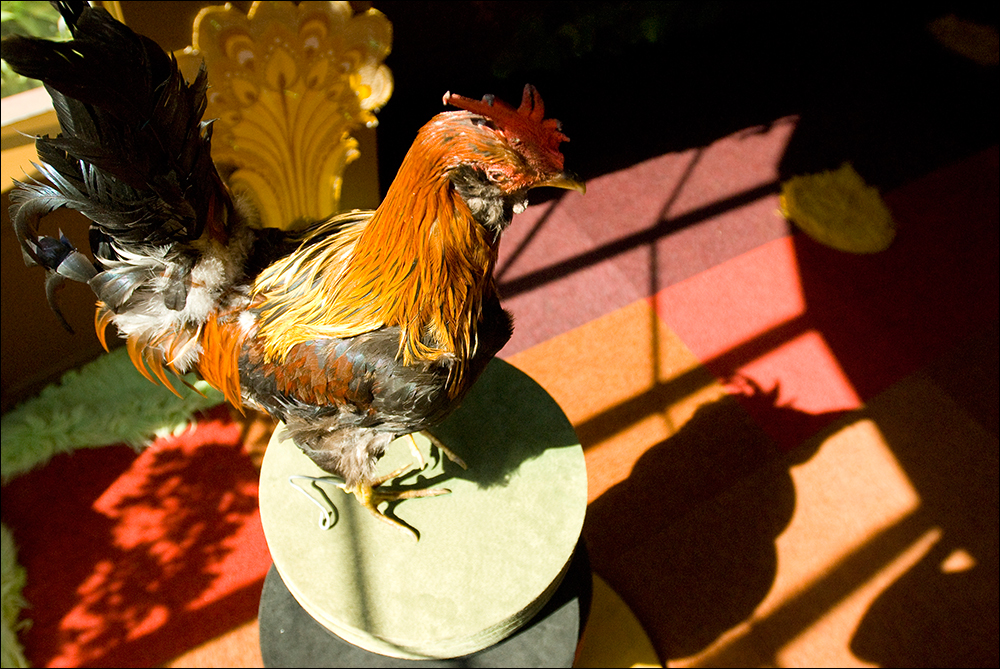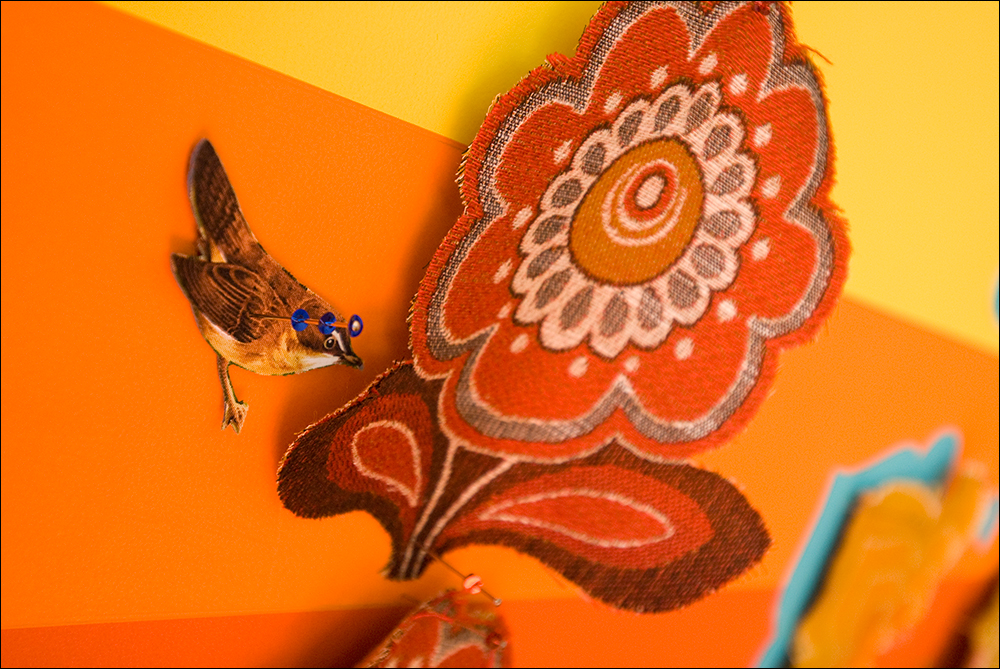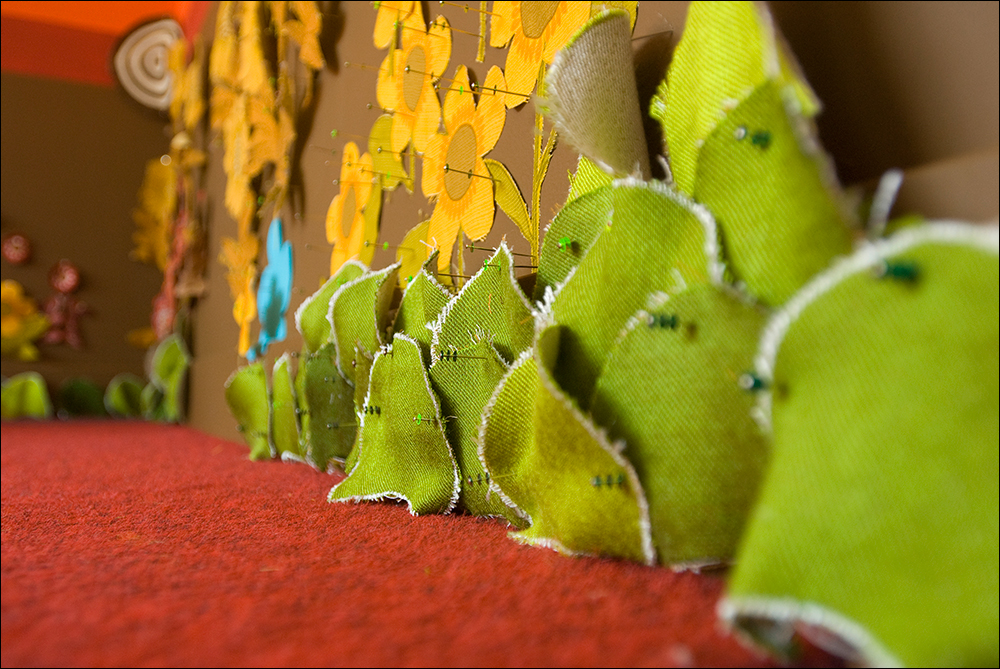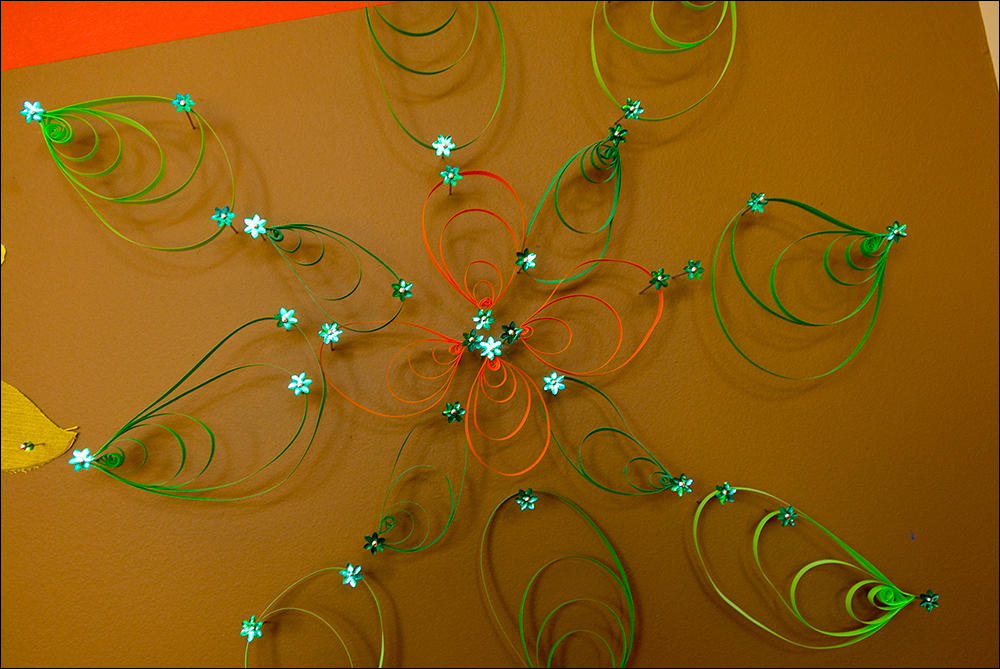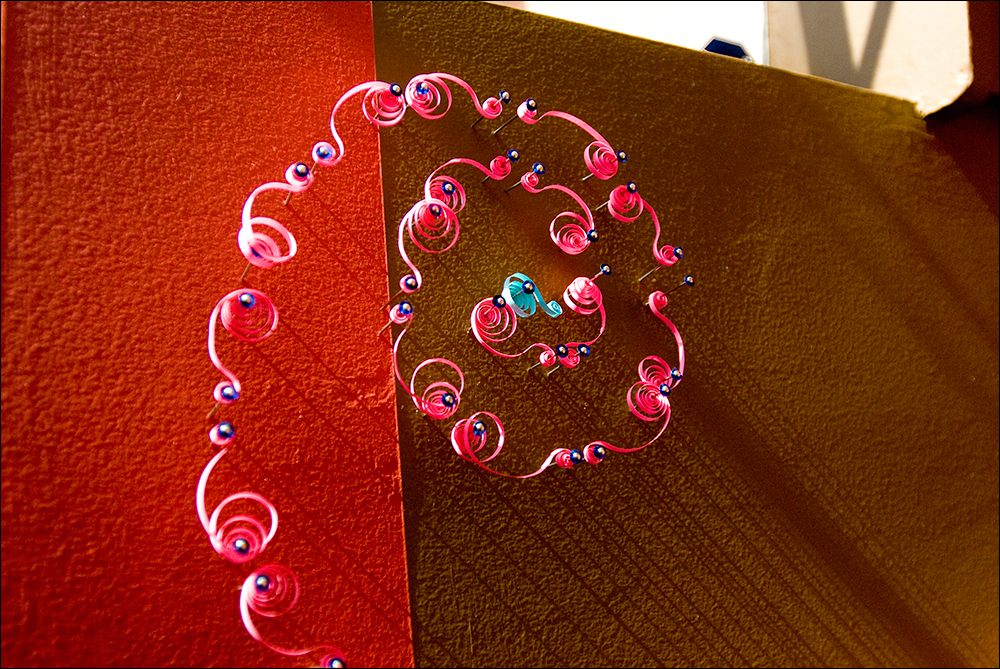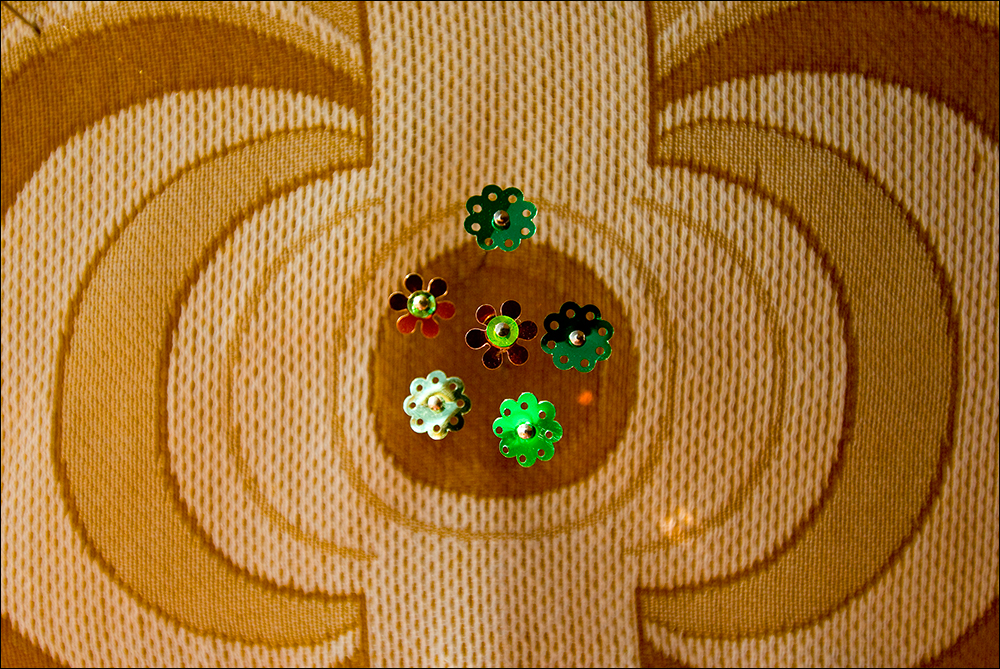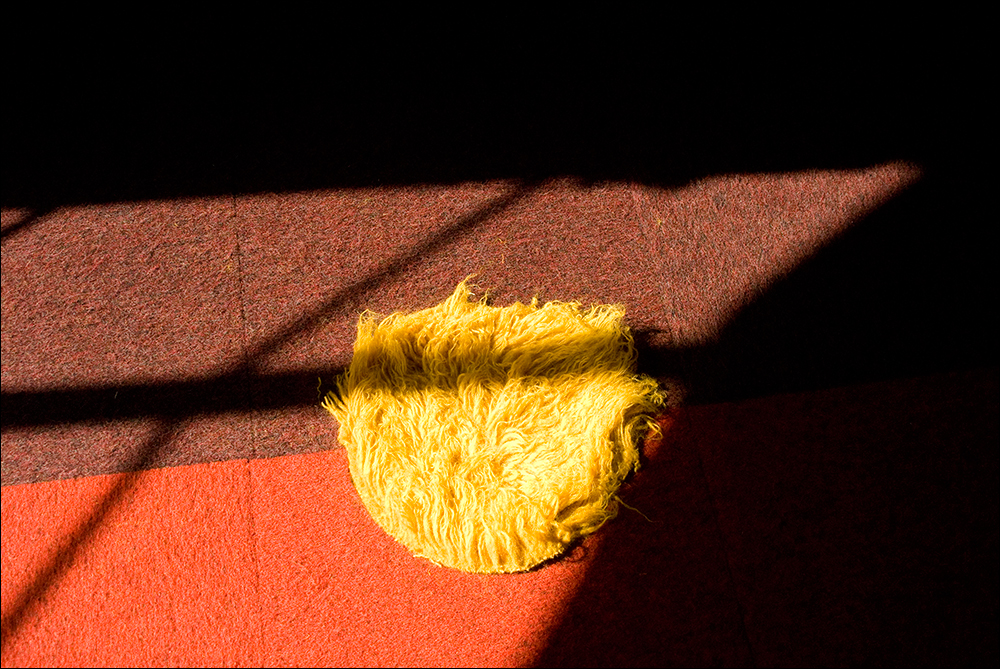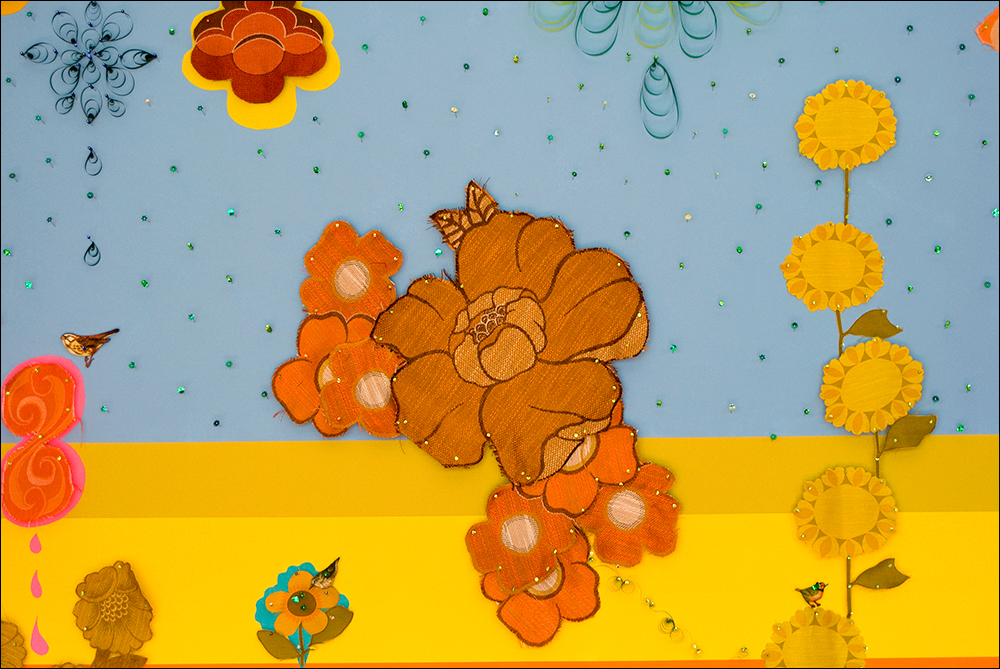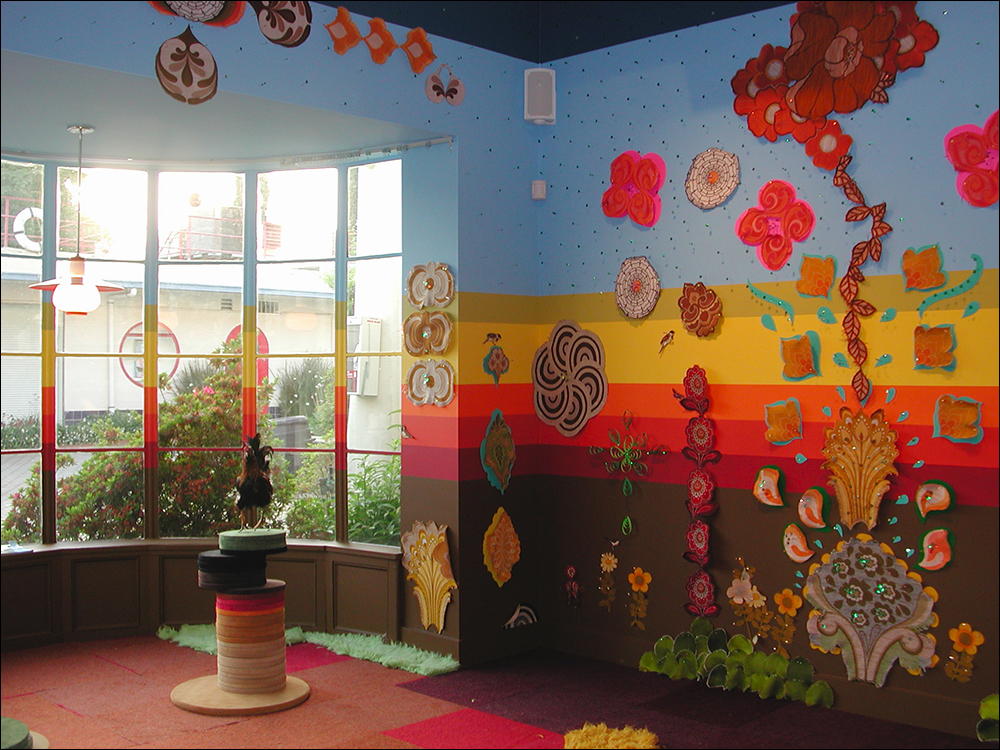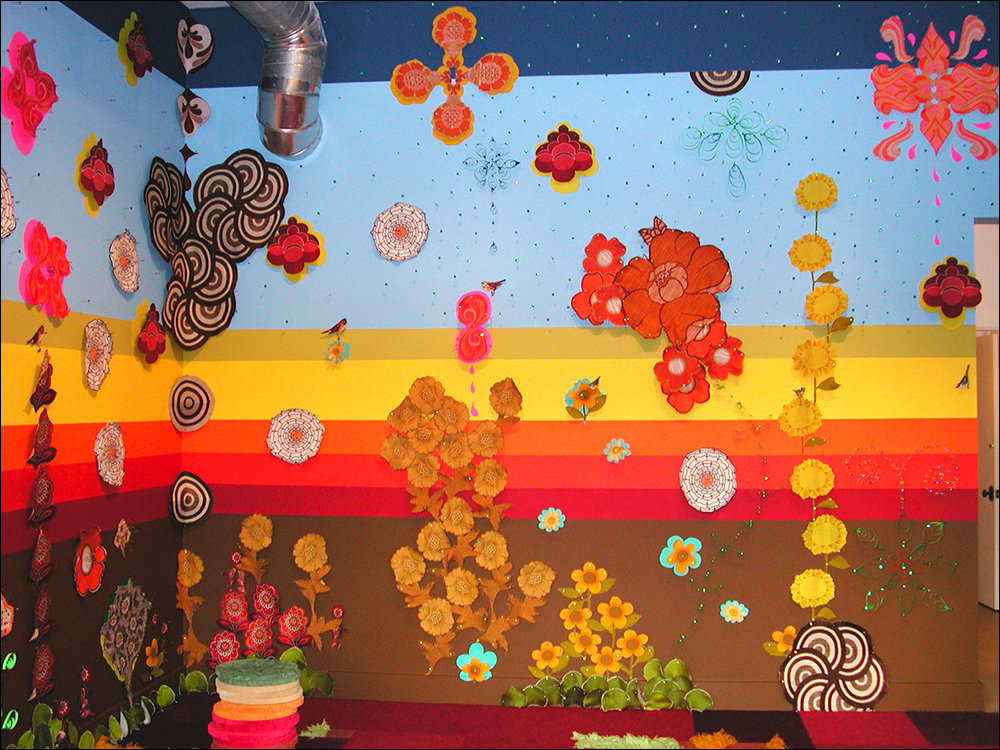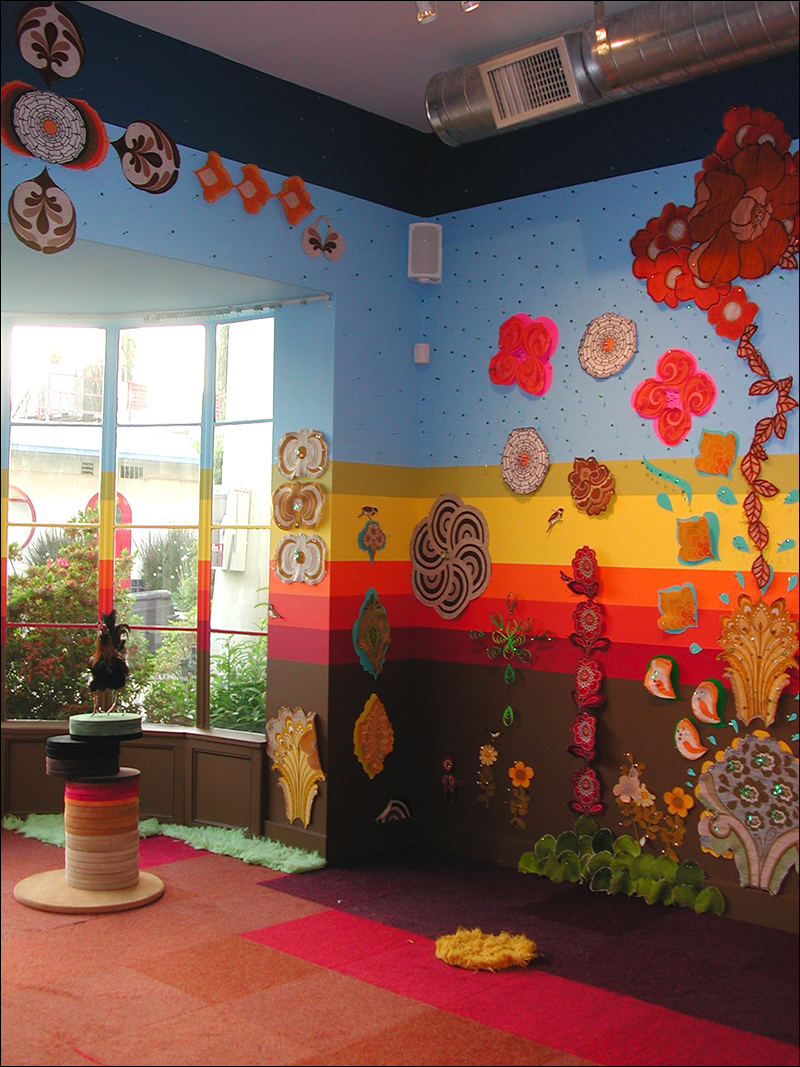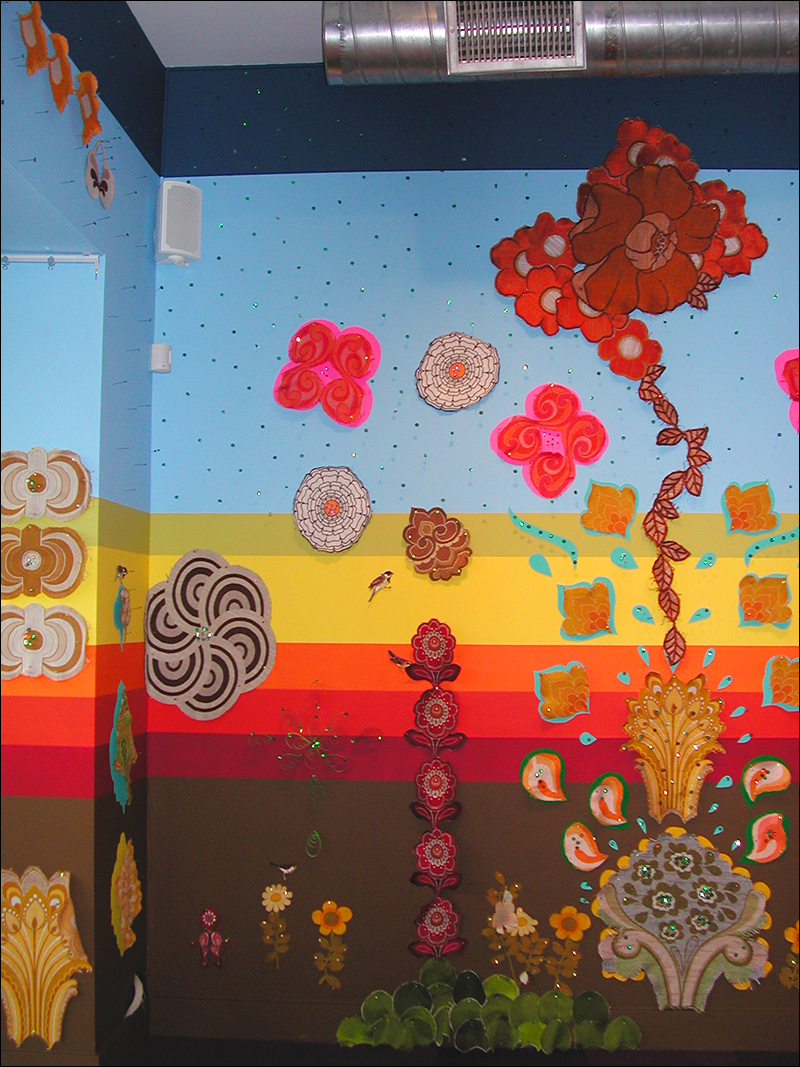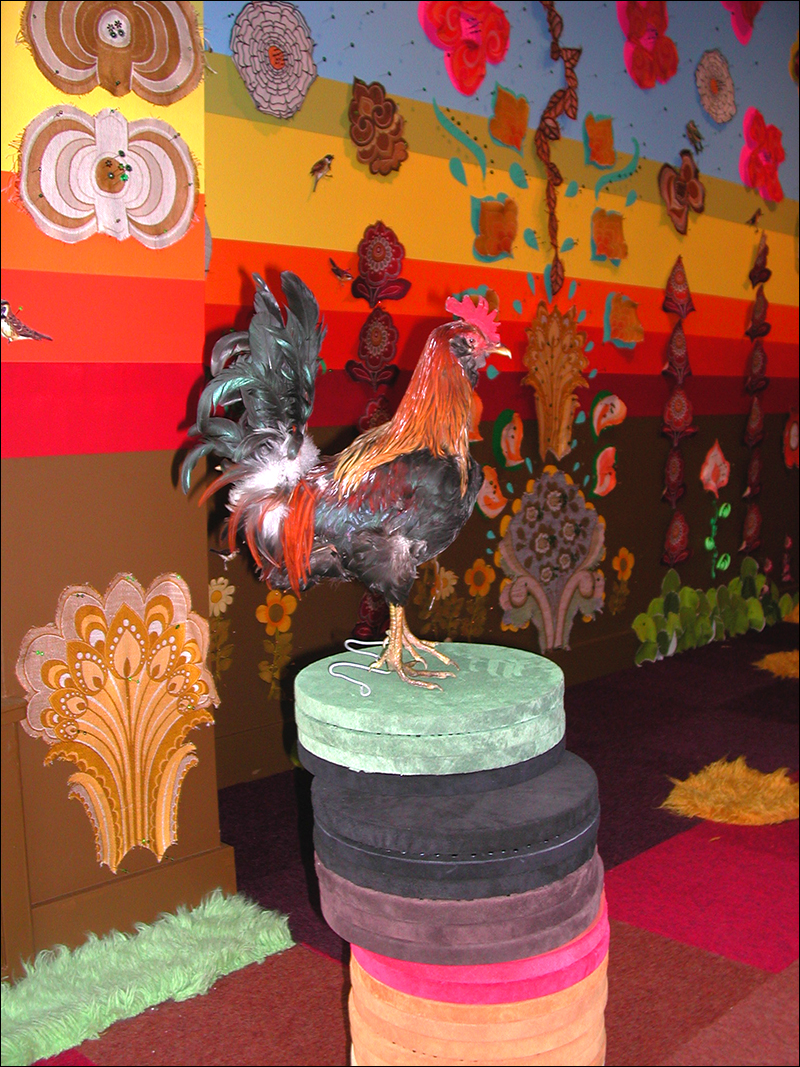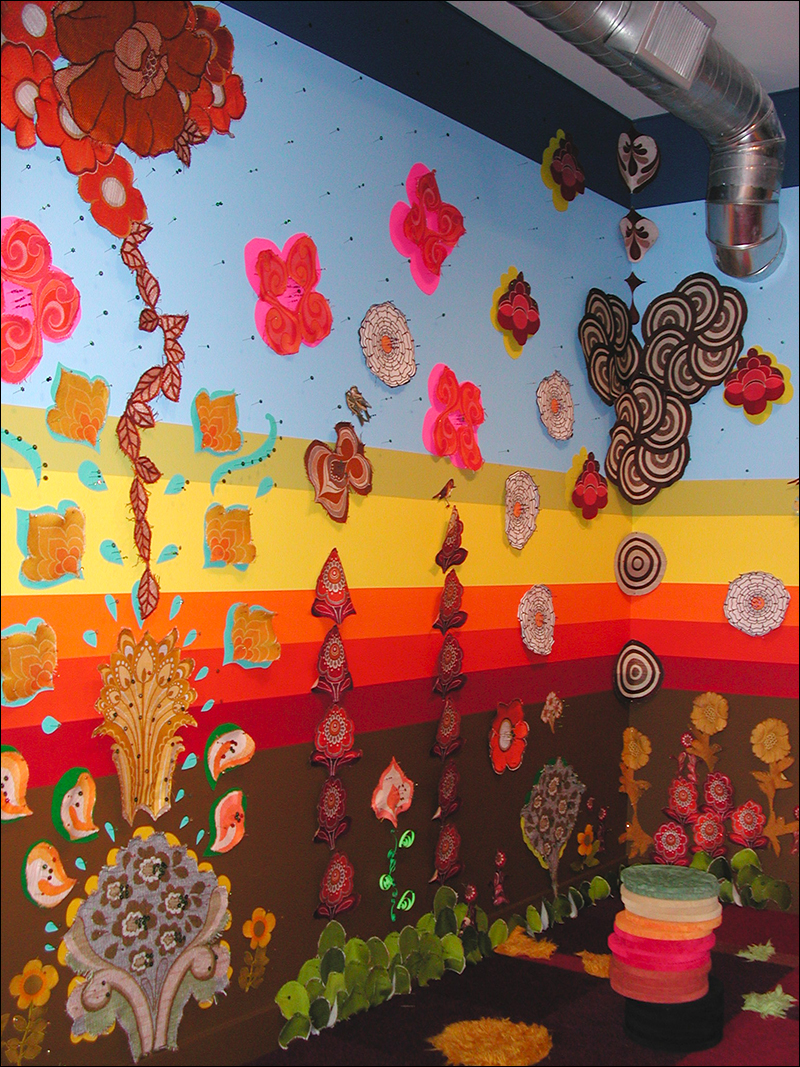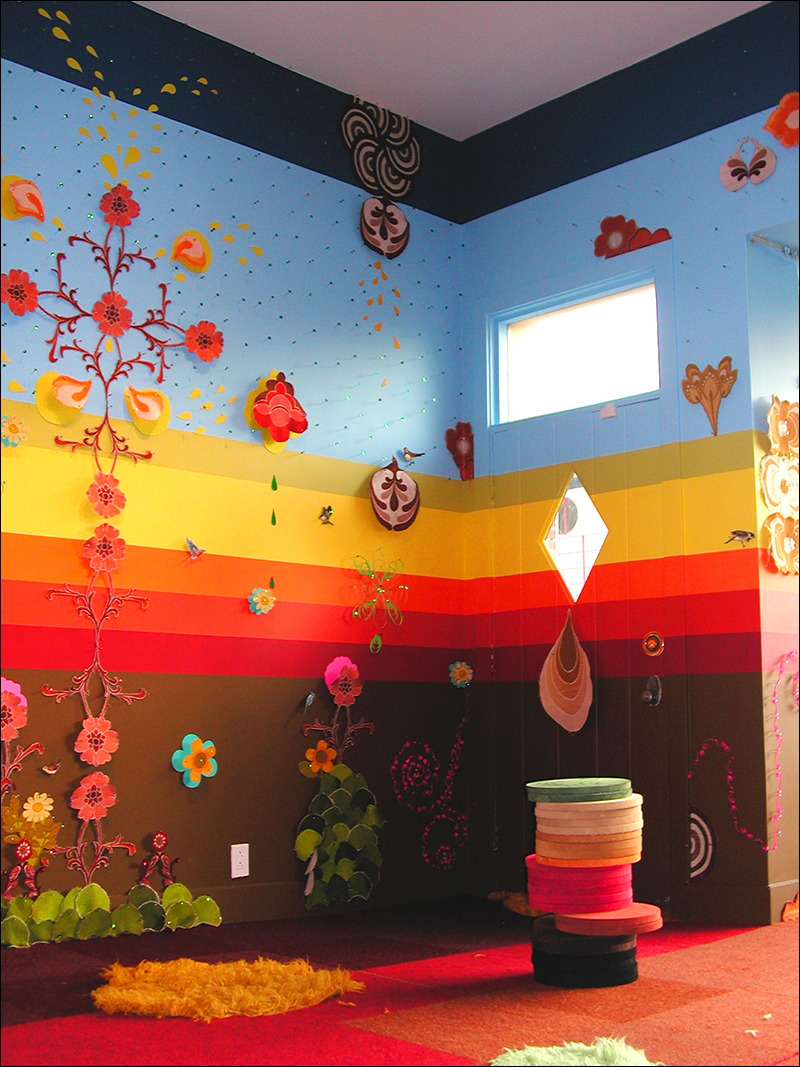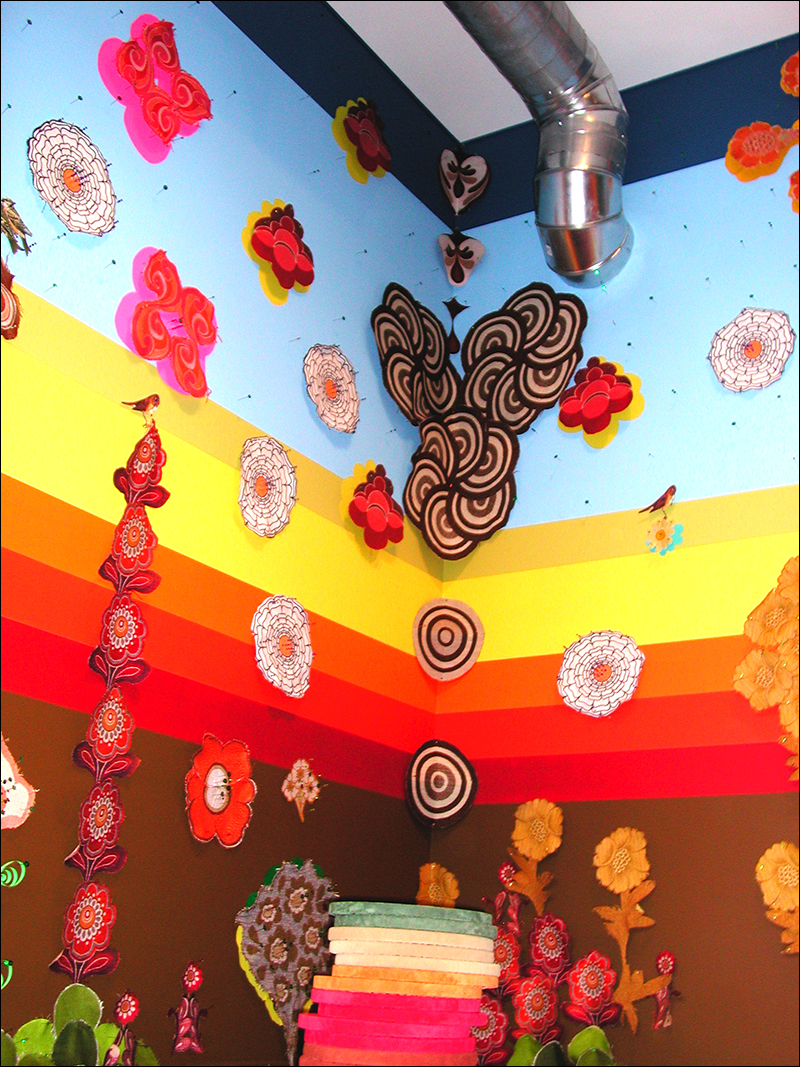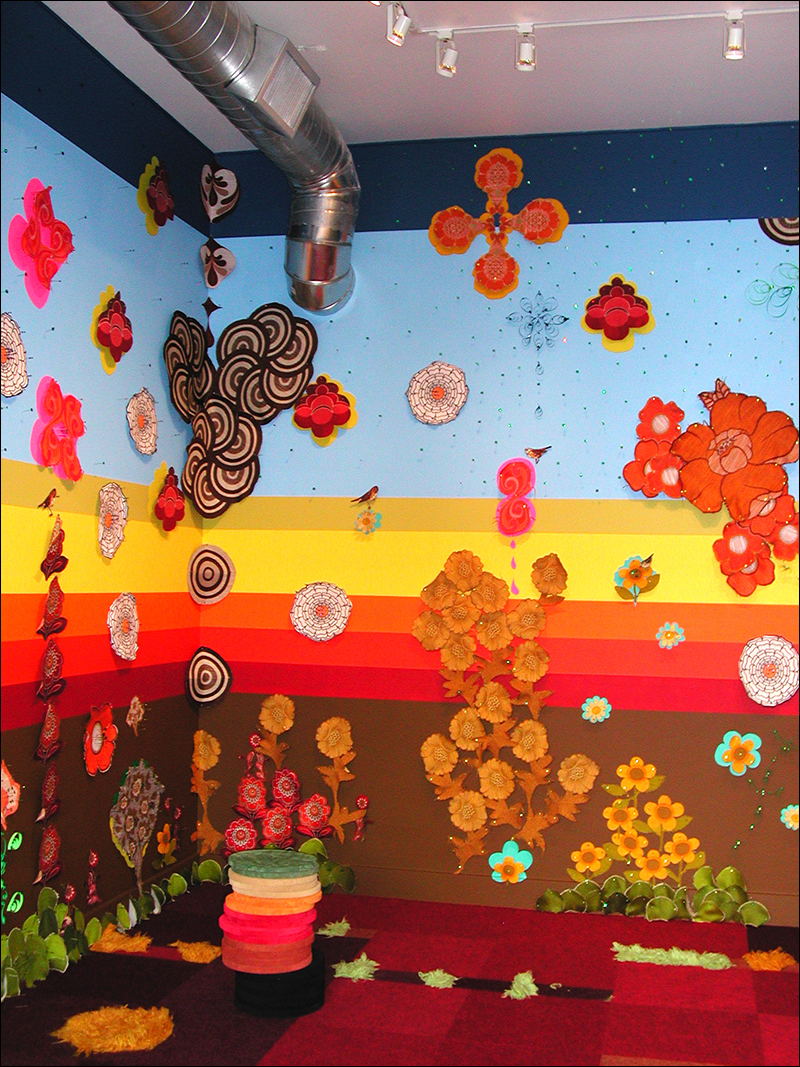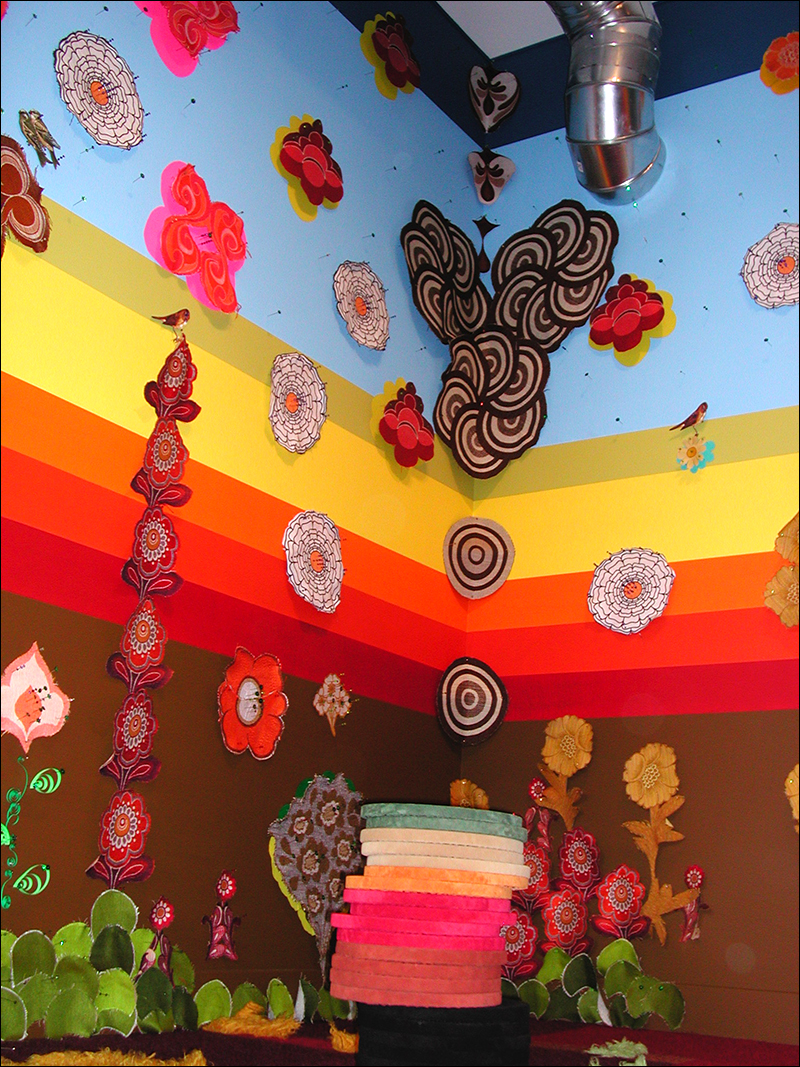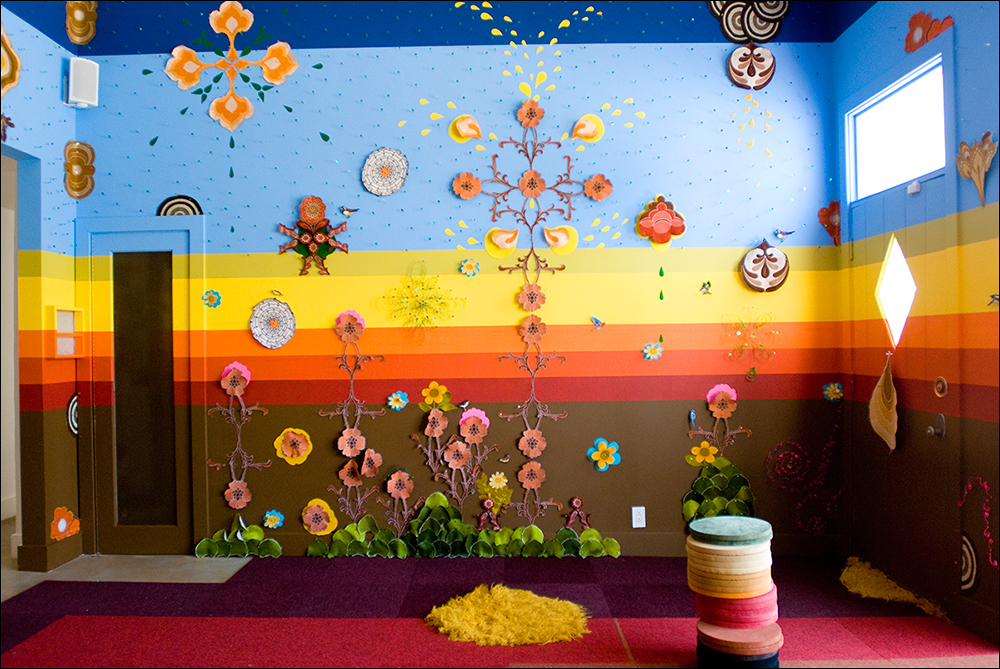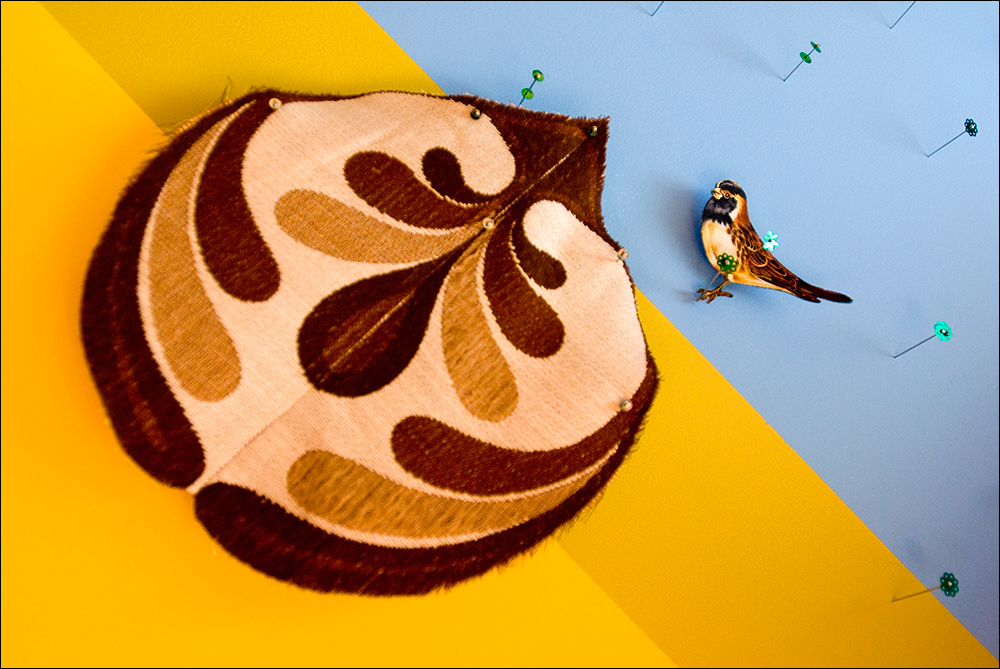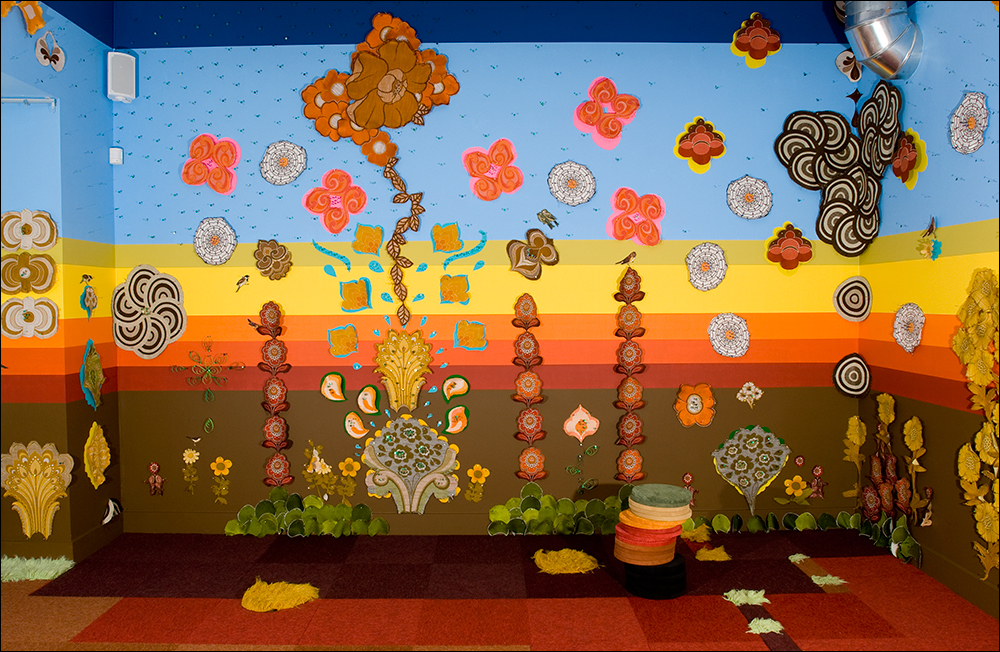Morning Glory
Morning Glory by Megan Wilson
Tinlark Gallery
May 26 - June 30 2007
6671 Sunset Boulevard, #1512 Hollywood, CA
Morning Glory, installation (paint, textiles -- cut curtains from the sixties and seventies, felt, pins, floor pieces -- plywood and suede, carpet, taxidermy rooster), Tinlark Gallery, Los Angeles, CA, 2007
Morning Glory
Morning Glory is a common name for over a thousand species of flowering plants in the family the Convolvulaceae , belonging to the following genera :
Calystegia
Convolvulus
Ipomoea
Merremia
Rivea
As the name implies, morning glory flowers, which are funnel-shaped, open at morning time, allowing them to be pollinated by hummingbirds, butterflies, bees and other daytime insects and birds, as well as Hawkmoth at dusk for longer blooming variants. The flower typically lasts for a single morning and dies in the afternoon. New flowers bloom each day. The flowers usually start to fade a couple of hours before the petals start showing visible curling. They prefer full sun throughout the day, and mesic soils. In cultivation, most are treated as perennial plants in tropical areas, and as annual plants in colder climates, but some species tolerate winter cold.
Culinary use:
Ipomoea aquatica, known as water spinach, water morning glory, water convolvulus or swamp cabbage, is popularly used as a green vegetable especially in East and Southeast Asian cuisines.
Recreational use:
The seeds of many species of morning glory contain d-lysergic acid amide , ergoline alkaloids better known as LSA . Seeds of I. tricolor and I. corymbosa (syn. R. corymbosa) are used as hallucinogens. They are about 5% to 10% as potent as LSD . Users also report the overall experience as well some of the effects to be rather similar to those of LSD. However, caution must be taken as some commercial seed producers protect their seeds with a chemical that may cause vomiting, nausea and abdominal pain if the seeds are eaten. In order to greatly reduce the chance of nausea from the seeds, it is not advised to eat seeds, chemically treated or not, rather, one of various forms of "extraction" methods can be performed to isolate and extract the active components. A low dose is up to 3g, mid up to 6g, high up to 10g, and a "heavy" dose is 10g upwards.
Cultivation:
Morning glory is also called asagao (in Japanese, a compound of asa "morning" and kao "face"). A rare brownish-coloured variant known as Danjuro is very popular. It was first known in China for its medicinal uses, due to the laxative properties of its seeds. It was introduced to the Japanese in the 9th century, and they were first to cultivate it as an ornament. During the Edo Period, it became a very popular ornamental flower. Aztec priests in Mexico were also known to use the plant's hallucinogenic properties to commune with their gods (see Rivea corymbosa ).
Ancient Mesoamerican civilizations used the morning glory species Ipomoea Alba to convert the latex from the Castilla elastica tree and also the guayule plant to produce bouncing rubber balls. The sulfur in the morning glory's juice served to vulcanize the rubber, a process pre-dating Charles Goodyear 's discovery by at least 3,000 years.
Because of their fast growth, twining habit, attractive flowers, and tolerance for poor, dry soils, some morning glories are excellent vines for creating summer shade on building walls when trellised, thus keeping the building cooler and reducing air conditioning costs.
In some places such as Australian bush land morning glories develop thick roots and tend to grow in dense thickets. They can quickly spread by way of long creeping stems. By crowding out, blanketing and smothering other plants, morning glory has turned into a serious invasive weed problem.



